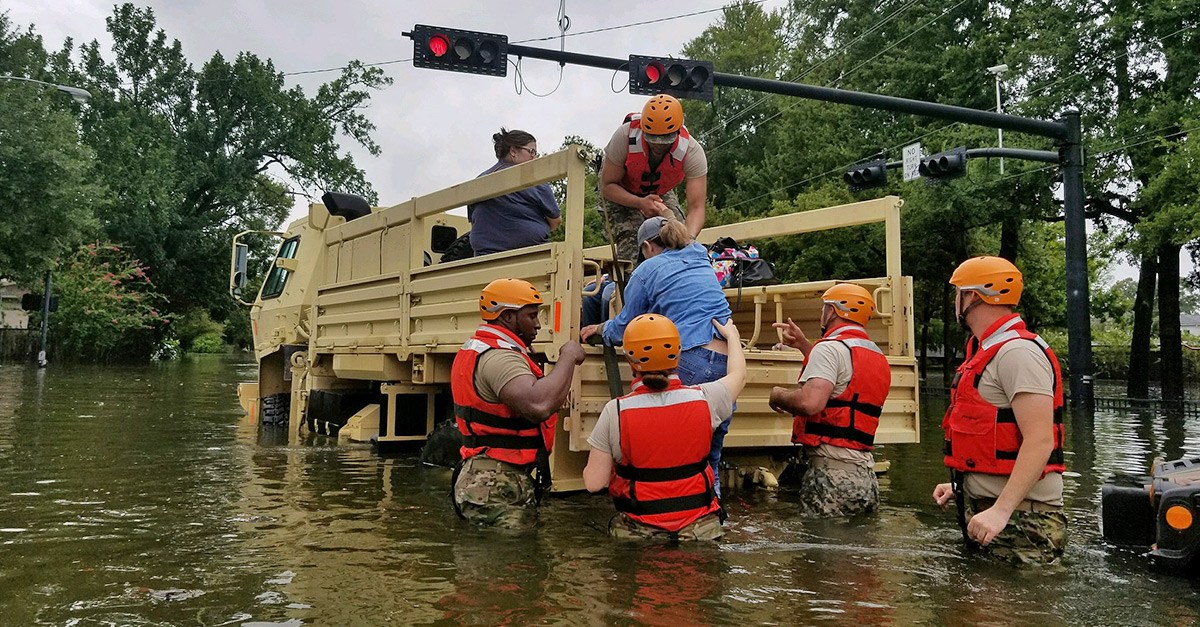Published by Robert W. Huntley, CFP®, CHFC and Steve Campbell
Everyone wants to help folks work through the process of recovering from hurricane Harvey. We decided to ask for and publish some practical advice from industry professionals in several specific fields. First up is filing insurance claims.
I asked my longtime friend and property and casualty agent Steve Campbell for his advice points when dealing with flood damage. Hoping this will be of use to you or someone you know.
Feel free to share this by email or online so people who need this advice can see it. We’re working with some other contacts on related topics including income tax advice, contractor advice and lender options/advice. Look for these posts soon. In the meantime, please call or email us if we can help with anything.
Robert W. Huntley, CFP®, CHFC
Help After a Disaster by Steve Campbell
Here are some steps to help with the property damage recovery process after a Hurricane or Flood event:
- If your home or business is damaged from a disaster, keep meticulous records of everyone you talk to with the date, time, person, company and the details of what was discussed. This will include your insurance agent, insurance company, adjuster and contractors.
- Develop an action plan of the next steps that need to take place and follow up plan for each step.
- Be prepared to be-and stay-very involved in the process from start to finish.
If you have flood damage and have flood insurance, or, if you have windstorm damage and have homeowner’s insurance:
- Call your insurance agent or company as soon as possible to report property damage. Follow up the phone call immediately with a written claim to the company. If you have flood damage to your home, contact your insurance agent or flood insurance company to report the claim. If you have windstorm damage, contact your homeowner’s insurance agent or home insurance company to report the claim. Contact your auto insurance company if your vehicle was damaged by a storm and you have Comprehensive (Other Than Collision) coverage.
- Make a list of your damaged property. The list should include details of the item, the date the item was purchased, the cost when purchased and any receipts. Take pictures and/or videos of all damaged property and the water inside your house. Don’t throw away damaged items (expect for health hazards like spoiled food) until your insurance adjuster has seen them.
- Remove standing water and dry the area as soon as possible. Move water soaked items to a dry, well-ventilated area. If you must move items outdoors, put them in a secure area to protect them from theft until the adjuster has examined them.
- Make repairs needed to protect your home and property from more damage. Cover broken windows and holes to keep the rain out. Don’t make permanent repairs until instructed by your insurance company. Keep records and receipts of how much you spend on repairs.
- Make sure your adjuster can contact you. If you need to move, give your insurance company and adjuster your temporary address and phone number.
- Work closely with your claims adjuster. Your insurance company should give you a timeframe for when they will come to your home. Verify the adjuster identification when they arrive. Show your adjuster all the damaged items and structural damage along with a list of damages. You may want to share a copy of all your damage photos with the adjuster. Have the adjuster take the time to thoroughly walk you through what the claims process will look like so you know what to expect.
- Don’t feel rushed to select a contractor or agree to a settlement amount. Take the time to make sure you have all the information you need to make good decisions. If there are discrepancies between the bids you receive from the contractors you are interviewing and the estimate provided by your adjuster, contact your adjuster to discuss the differences and work on a resolution. The initial settlement is not always the final claim settlement. If you discover additional damage that you and the adjuster didn’t find on the first inspection, you can file a supplemental claim, even after you have received money for your initial claim. You generally have up to one year after the date of loss to file a supplemental claim.
If you have flood damage and do not have flood insurance:
- Contact FEMA as soon as possible to apply for financial assistance. To apply for assistance online, go to DisasterAssistance.gov. Click Find Assistance and answer the questions to get a list of assistance you may be able to apply for. Click Apply Online to complete an application. Come back after you apply and click Check Status to check the status of your application. To apply by phone for FEMA assistance only call 1-800-621-3362.
- FEMA’s assistance is limited and is not intended to return a home to its pre-disaster condition.
- Follow the suggested steps 2, 3, 4, 7 from above.
- When the FEMA inspector visits your home, be sure to verify their identification.
Look out for fraud:
Disasters are often followed by a criminal element drawn to the area to take advantage of the situation. Fraud can range from shoddy repairs to price gouging.
Here are some tips on hiring a contractor:
- Use local companies
- Get written estimates
- Obtain more than one bid
- Do not pay for repairs up front
- Do not feel pressured or threatened to hire a contractor
The process of recovery will take time and effort on your part. Please stay involved.
Steve Campbell
Steve Campbell Insurance Agency, Inc.
15840 FM 529 Rd., Suite 255
Houston, TX 77095
Office: 281-550-3111
Email: [email protected]
Web: www.stevecampbellinsurance.com
Steve Campbell Insurance Agency, Inc. is not affiliated with CWM, LLC and Cetera. CWM, LLC and Cetera do not offer all Insurance services.


